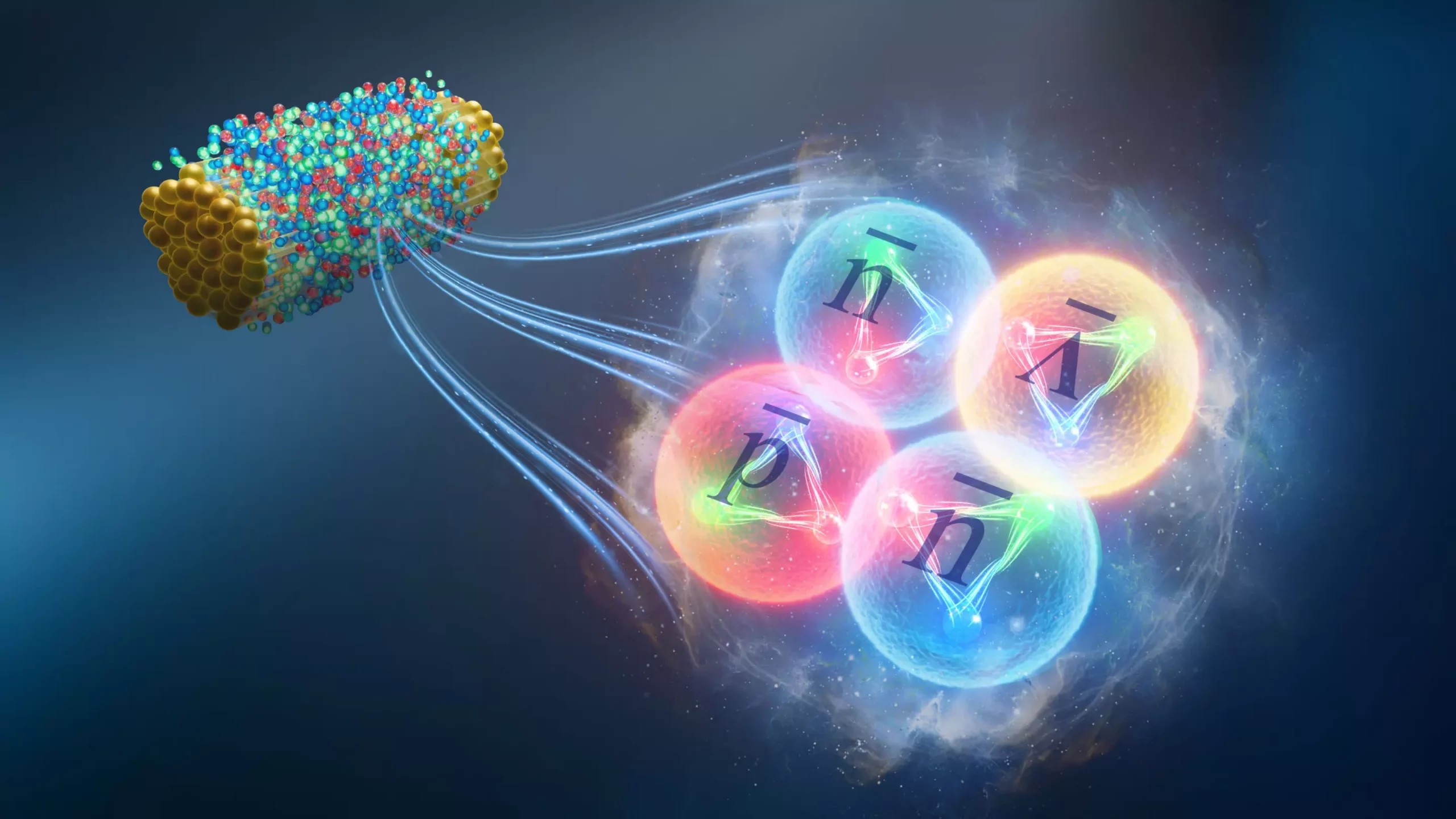In the quest to decode the universe’s fundamental nature, scientists have long turned their gaze toward antimatter—the enigmatic counterpart to matter. Recent groundbreaking research from the Relativistic Heavy Ion Collider (RHIC) has unveiled a new player in the antimatter arena: antihyperhydrogen-4. This discovery, the most massive antimatter nucleus observed to date, challenges existing understandings of particle physics and the fabric of the universe itself. Formed from an antiproton, two antineutrons, and one antihyperon, antihyperhydrogen-4 opens new avenues in the enduring pursuit to understand the matter-antimatter asymmetry that perplexes physicists.
RHIC, a premier facility at Brookhaven National Laboratory funded by the U.S. Department of Energy, serves as a time machine of sorts, recreating the conditions immediately following the Big Bang. By colliding heavy atomic nuclei at near-light speeds, RHIC generates a state of matter where protons and neutrons lose their individual identities, forming a transient quark-gluon plasma—a primordial “soup” from which various particles emerge. These high-energy collisions enable the detection of exotic particles, including the recent antihyperhydrogen-4.
STAR Collaboration, a group operating within RHIC, meticulously analyzed particle collision remnants to spot this new antimatter nucleus. Highlighting their methodology, graduate student Junlin Wu noted that while antimatter shares similar properties with matter, the universe’s composition is starkly tilted towards matter—an imbalance that invites further investigation.
The prevailing assumption in physics is that matter and antimatter were generated in equal quantities during the universe’s embryonic moments. Yet, as our universe is predominantly composed of matter, the question remains: What tipped the scales? The discovery of antihyperhydrogen-4 isn’t merely a cataloging of exotic particles; it could provide vital clues regarding this imbalance. STAR physicist Hao Qiu underscored the necessity of exploring new antimatter particles in this context, framing antihyperhydrogen-4’s detection as a crucial step toward unraveling these cosmic mysteries.
The article delves into previous advances in antimatter research, noting earlier discoveries such as the antihypertriton and antihelium-4, each time pushing the boundaries of our understanding of the universe’s structure. With antihelium-4 serving as a significant benchmark, the hunt for antihyperhydrogen-4 represents a logical progression in the ongoing search for exotic antimatter configurations—signifying the intricate dance between the known and unknown in particle physics.
Detecting the elusive antihyperhydrogen-4 nucleus required an intricate process involving the analysis of vast amounts of collision data. The STAR team meticulously reconstructed particle tracks to identify potential antihyperhydrogen-4 events, marking a fusion of advanced computing and experimental physics. Each collision generates millions of particles, with the detection of the rare antihyperhydrogen-4 depending on the coalescence of one antiproton, two antineutrons, and one antilambda particle at a precise moment—a statistical challenge of monumental proportions.
Lijuan Ruan, a prominent physicist within the collaboration, described the challenges faced in confirming these events amidst a sea of potential noise. The researchers utilized a technique of decay pattern analysis, looking for specific signatures among a convoluted backdrop of other particle interactions. Through rigorous examination, they identified 22 candidate events, ultimately estimating that around 16 of these represented genuine occurrences of antihyperhydrogen-4, instilling confidence in their findings.
The implications of antihyperhydrogen-4’s discovery extend far beyond simple classification. The STAR team’s subsequent analysis engaged in a comparative assessment of the lifetime characteristics between antihyperhydrogen-4 and its matter counterpart, hyperhydrogen-4, revealing no significant differences. This finding, while perhaps disappointing for those hoping for groundbreaking symmetry violations, provides reinforcement for the established principles of particle physics.
Physicists, including doctoral student Emilie Duckworth, acknowledged that a violation of the observed symmetries would have forced drastic reconsiderations of current scientific understandings. The results of this endeavor not only reconfirm existing models but also carve out important pathways for future exploration into the nature of the universe, particularly in addressing the crucial matter-antimatter discrepancy.
As research continues, the STAR Collaboration aims to further dissect the attributes of antihyperhydrogen-4 and its counterparts in the universe. With plans to investigate mass differences between matter and antimatter particles, the ongoing exploration promises more revelations about the cosmos. As we stand at the precipice of fundamental discoveries in particle physics, the remarkable uncovering of antihyperhydrogen-4 epitomizes our enduring quest for understanding—offering not just insights into the nature of antimatter but also highlighting the exquisite complexity of our universe.

